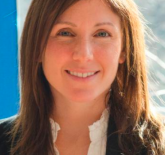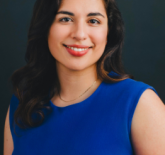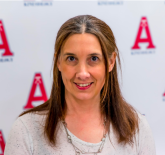The Secret of S.M.I.L.E.: Best Practices for Delivering Adapted Physical Activity Programming
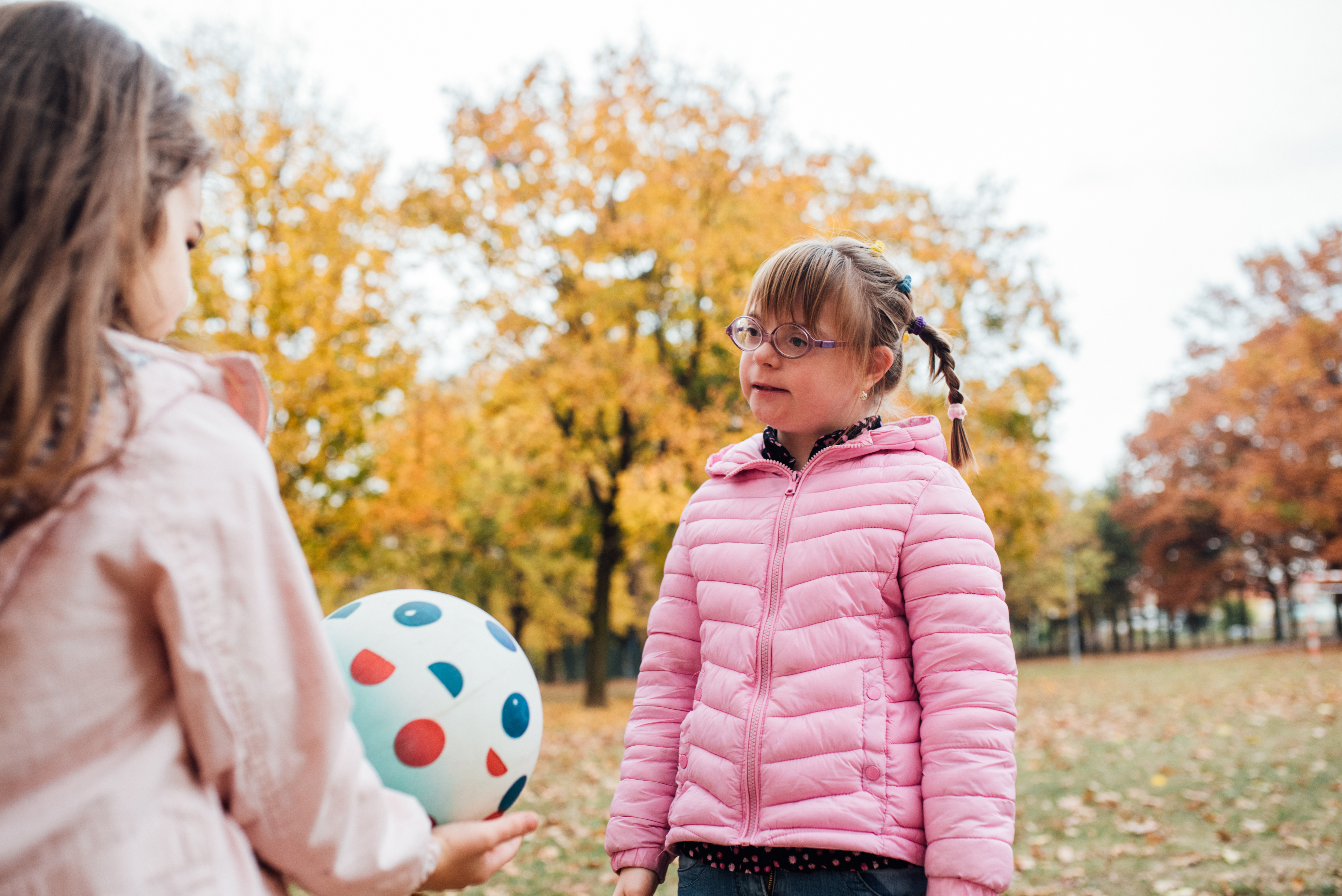
Previously published in volume 83, Issue 4
Abstract
Knowledge is lacking regarding methods for fostering physical literacy among individuals with disabilities. S.M.I.L.E. or the Sensory Motor Instructional Leadership Experience is a model adapted physical activity program for children, youth, and adults with disabilities linked with Acadia University in Nova Scotia, Canada. An understanding of how S.M.I.L.E has maintained community support and achieved long-term success in promoting physical literacy within an adapted physical activity program can be of benefit to researchers and practitioners aiming to develop and promote optimal physical activity programming for individuals with disabilities. Thus, the purpose of this paper is to provide best practices, identified over the course of S.M.I.L.E.’s 35-year history, for delivering adapted physical activity programming. Four areas of program delivery are explored: organizational structure, staff training, program content, and assessment. Lessons learned in community engagement and transformative learning are also discussed to aid practitioners who may want to simulate S.M.I.L.E. within their own communities.
What is S.M.I.L.E?
Originally developed in 1982 as part of a perceptual motor learning course, S.M.I.L.E. (Sensory Motor Instructional Leadership Experience) is an innovative, volunteer-driven adapted physical activity (PA) program delivered to children and youth, and increasingly adults, with developmental, intellectual, physical, and/or sensory disabilities. The goal of S.M.I.L.E. is to improve participants’ total development and promote lifelong PA participation through physical literacy. S.M.I.L.E. is linked with the School of Kinesiology at Acadia University (Nova Scotia, Canada). Programming is delivered four times per week over the course of 16 weeks. In 2016-2017, more than 280 participants (aged 3 to 53 years) were enrolled in S.M.I.L.E, with 400 student volunteers from diverse university departments engaged in program delivery. S.M.I.L.E’s success has resulted in its recognition as a model for delivering adapted PA programming, with several Canadian post-secondary institutions beginning to adopt the S.M.I.L.E. approach and structure.
The purpose of this paper is to provide best practices for delivering adapted PA programming in the areas of organizational structure, staff training, program content and assessment. These best practices are a culmination of S.M.I.L.E.’s 35-year history. Knowledge of how S.M.I.L.E has achieved long-term success and sustainability within its community is of value to researchers and practitioners aiming to develop and advance PA among children, youth and adults with disabilities.
Importance of physical literacy to S.M.I.L.E.
Physical literacy is defined as “the motivation, confidence, physical competence, knowledge and understanding that individuals develop in order to maintain PA at an appropriate level throughout their life” (CAPL, 2013; Whitehead, 2010, p. 5). Efforts to support physical literacy among children, youth and adults with disabilities are often limited due to a lack of knowledge regarding the impact of disability on physical literacy (Longmuir & Tremblay, 2016). S.M.I.L.E. focuses on all aspects of physical literacy, with assessment currently centering on physical competence (i.e., motor skill acquisition), motivation, and confidence given that these are critical first-steps for supporting lifelong PA engagement (Whitehead, 2010).
S.M.I.L.E. uses an abilities-based approach (Campbell, 2008; Emes, Longmuir, & Downs, 2002) to support an understanding of physical literacy. Implementation of the abilities-based approach is centered around four key tenets: (1) person-centeredness (e.g., discovering participants’ unique interests, talents, and skills); (2) inclusive (e.g., providing all participants equal opportunity to contribute and to access resources); (3) individualization (e.g., tailoring activities to participant needs through individualized PA plans); and (4) environmental compatibility (e.g., considering volunteers’ attitudes towards participants and disability; attention given to the physical, psychological and social accessibility of the program).
Organizational structure
S.M.I.L.E.’s unique organizational structure promotes optimal program delivery. In this section, key individuals and groups within this organization system are identified along with their roles and responsibilities. Further details are provided in Figure 1 and Table 1.
Community. Three key community groups play a critical role in S.M.I.L.E.’s success: (1) the university; (2) an advisory board; and (3) donors. Acadia University offers vital support through the provision of university gym and pool space, and student involvement. The S.M.I.L.E. advisory board meets annually to guide decision-making. The board also provides on-going support as needed. Board members include: university staff (e.g., the S.M.I.L.E. Program Director, the Director of Student Services, and the Advancement Officer), community leaders (e.g., local business leaders and school board representatives), the S.M.I.L.E. Student Director, and a S.M.I.L.E. alumnus. Donors (e.g., university alumni, former S.M.I.L.E. volunteers, a family foundation, and local businesses) are also critical to program sustainability. Funds are typically solicited through an annual gala, student-led fundraising initiatives and weekly fundraising activities.
Program director. The program director oversees S.M.I.L.E. program activities, finances, organizational structure and training, in addition to fostering and maintaining community relationships. Supervision of internal research is also a responsibility of the director to refine best practices for program delivery. To be eligible for this position, an individual must hold a PhD in adapted PA or a closely related field of study. This position is currently held by a full-time faculty member within Acadia University who incorporates this work as part of her service responsibilities.
Program coordinator. The program coordinator oversees day-to-day program delivery, as well as any concerns that may arise during sessions. The coordinator also plays a leadership role in volunteer selection, and assists with community promotion and fundraising. The coordinator position requires a Bachelor’s degree, as well as previous S.M.I.L.E. experience. This is a full-time paid position.
Student directors. Two student directors are assigned to each program day (i.e., four pairs of student directors in total each year), with an additional student director assigned to adult programming on Fridays. Student directors are part-time, unpaid positions. The students that hold these positions are responsible for supervising session plans and activities, and communicating with parents and ancillary program volunteers (e.g., music therapy and nutrition students) during their assigned day. Each pair manages 12 to 15 student leaders. As part of their role in overseeing student leaders, student directors must provide a supportive environment for leaders and instructors, review e-mail communication between leaders and instructors, and contribute to problem solving as required. Student directors also organize alternate instructors as necessary, and educate instructors on behavior management techniques, and specific medical conditions and disabilities.
Leaders. Experienced instructors may apply to be student leaders, a part-time, unpaid position which sees former instructors taking on more responsibility. Leaders oversee instructors assigned to their group (approximately 8 to 12 instructors per group), including providing direction and support during sessions. Leaders work together to develop themes and activities for each session, and communicate these activities to instructors on a weekly basis. Leaders also review instructors’ weekly summary reports and provide feedback.
Instructors. Instructors are Acadia University undergraduate students from a variety of disciplines including kinesiology, engineering, business, biology, math and music. Students who are successful in the competitive application process are paired with a participant (1:1 or 2:1 instructor to participant ratio depending on participant needs). Instructors spend 1 to 2.5 hours per week with their participant (depending on assigned program day). These roles are part-time and unpaid.
Participants. Participants include children, youth and adults from the community with physical, intellectual, sensory and/or developmental disabilities. Participants are referred to S.M.I.L.E. by early childhood programs (preschool-aged children), resource teachers (school-aged children and youth), local health professionals (e.g., physicians, physiotherapists, occupational therapists, and speech-language pathologists), and through associations that advocate for the needs of individuals with varying abilities. The majority of participants present with multiple diagnoses, with the most common conditions (based on 2016-2017 enrollment) being developmental (38%), behavioral (20%), mental health-related (8%) and other (13%; e.g., conditions impacting learning, mobility, speech, sensory, and agility).
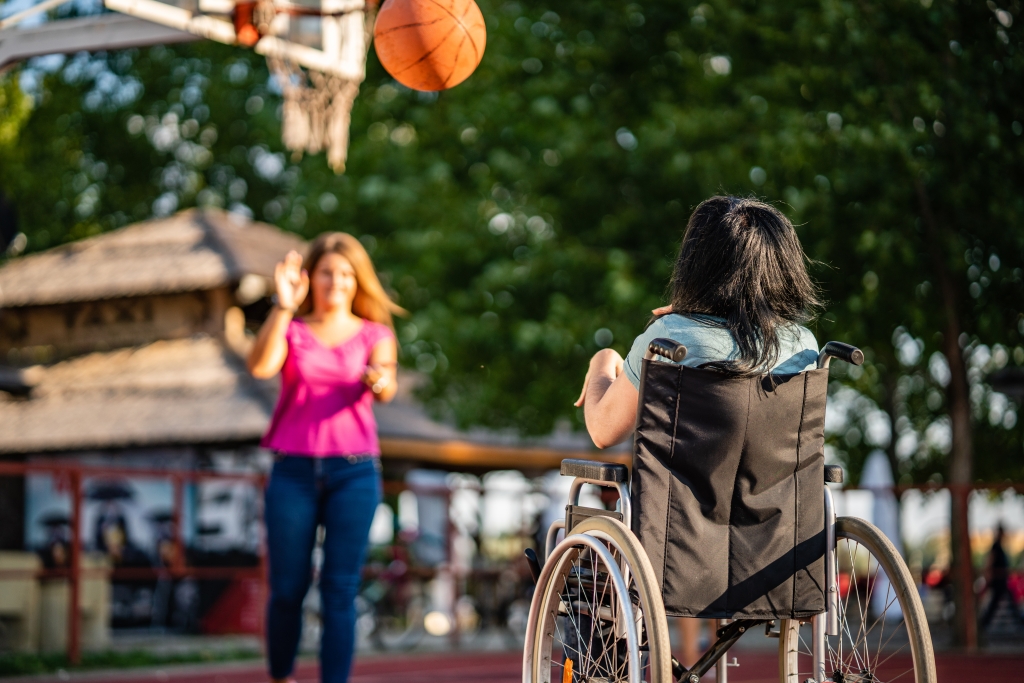
Training
An essential aspect of maintaining the quality of S.M.I.L.E. is the ongoing, mandatory volunteer training. Training sessions are guided by the abilities-based approach (Campbell, 2008; Emes et al., 2002) with a specific focus on promoting understanding of participants’ educational, psychosocial, and physical needs. Training format differs based on the objectives of the training session. Volunteers are first trained through in-person orientation sessions followed by a 4-hour classroom, gym, and pool session (to expose volunteers to the variety of activities that can be included in participant individualized PA plans). Throughout the year, weekly group meetings, and meetings with resource teachers occur to discuss participant goals. Content experts also provide presentations throughout the year.
Training sessions for leaders occur on one weekend (Friday and Saturday) prior to the beginning of the semester (8.5 hours total training). For instructors, training differs based on assigned program days. One, 3-hour training block occurs for the instructors responsible for the Friday and Saturday program days, while the instructors involved in the Tuesday and Thursday program days participate in one, 1.5-hour training session. Training sessions for both groups consist of reviewing a series of modules, which cover topics including: (1) behavior modification (i.e., creating a positive learning environment, using positive approaches, and implementing proactive management techniques); (2) assessment (i.e., motor competency checklists, ecological task analysis (Davis & Burton, 1991), and goal-setting); (3) developmentally- and age-appropriate activities (e.g., exploring different types of activities and methods for adaptation); (4) leadership (e.g., procedures on how to organize and lead sessions); (5) sensory and motor development (e.g., understanding physical literacy and its application to S.M.I.L.E. participants); (6) application of the abilities-based approach; and (7) adapted aquatics (e.g., pool safety and programming). Instructor training also focuses on building relationships with Leaders and Student Directors, becoming familiar with assigned program days, alleviating any concerns prior to the first session, and policies and procedures.
Further weekend-long training is provided to student directors and leaders. These sessions cover additional topics including: further assessment, safe programming, instructional design, and team building and leadership.
Day-to-day delivery structure
Program planning. Planning is a key aspect of successful individualized programming at S.M.I.L.E. An initial assessment is conducted with each participant to provide instructors with knowledge of appropriate activities to implement, and to formulate a concrete individualized plan. During the initial assessment, instructors conduct an ecological task analysis (Davis & Burton, 1991; ETA) with the aim of developing an individualized PA plan. The focus of the ETA is for the instructor to become familiar with the participant’s regular activities through discussions with their assigned Leader, a parent/guardian, and (if applicable) a resource teacher. The instructor also conducts an assessment of the participant’s motor skills using standardized checklists (e.g., the Modified TWU aquatic assessment; Lepore, Columna, & Friedlander Litzner, 2015) and national physical literacy assessment criteria (e.g., the fundamental movement skills of the Canadian Assessment of Physical Literacy, 2013). See Appendix 1 for a sample of the pre-program assessment tool used in S.M.I.L.E.
Using the ETA, instructors are able to develop purposeful, individualized movement, social, and cognitive goals based on participants’ needs and interests, thus promoting independence and autonomy. Once the goals are developed, instructors form short- and long-term instructional objectives, and identify steps for achieving the goals, and criteria indicative of mastery, which are reviewed each week. As part of this process, instructors determine how to manipulate the physical and social environment (e.g., altering the size of the group for different activities, addition of verbal cues and communication tools such as the Picture Exchange Communication System (Bondy & Frost, 2001) to promote participant growth and goal achievement while limiting participation barriers. Assessment documents (e.g., progress reports, checklists, session summaries) remain confidential, however instructors keep parents informed of session details (e.g., activities chosen). Assessment documents may also contribute to school progress reports on participant development.
Program sessions. Four sessions are delivered each week. On Tuesday and Thursday mornings, sessions cater to elementary, middle and high school students who participate in hour-long adapted aquatics programming. On Fridays, sessions include gym, pool and other skill-based and therapeutic activities, which are delivered to teens and adults with disabilities in the local community in the evening (e.g., Bowling nights). A final session is delivered on Saturday mornings to preschoolers through preteens, and includes different physical literacy-enhancing and therapeutic activities (e.g., music therapy; see Table 2 for further details).
Weekly meetings. The program director holds weekly meetings with the coordinator and student directors to discuss the upcoming week’s sessions, oversee parent and staff communication, and address any unresolved issues. The Coordinator also holds weekly meetings with Leaders to review session delivery plans. These different weekly meetings are an essential part of maintaining delivery standards, organizing programming, and ensuring that all staff and volunteers share the same program goals and approach to participation.
Daily meetings. Meetings are held before and after every session. During group pre-session meetings, instructors’ goals are discussed among the student volunteers assigned to that session. During the post-session meetings, instructors provide brief overviews of their day to the student directors (e.g., highlights and/or aspects of session that require refinement) in order to ensure an optimal participant experience the subsequent week.
Weekly objectives and reflections. All volunteers complete weekly objectives and reports to ensure that program standards are maintained, and that participants are progressing. Instructors complete weekly summary reflections which are provided to the Leaders. These documents discuss activities the participant enjoyed, modifications taken, and progress towards the participants’ goal. Instructors also provide a brief overview of the day and detail any behavioral concerns. Reflections are based on weekly reflection prompts as outlined in Hodge, Tannehill, Kluge’s (2003) work. These prompts include: what activities were tried, where they spent most of their time, whether they participated in small group activities, whether there were any behavioral issues, and whether there are any other notable comments from the session. Instructors then note participant goals for the following week. Prompts for this goal-setting action plan include: what types of activities are they are going to use to achieve their goals; how can they make it fun; will their child need prompting and/or guidance; should they lead by example or let the child explore; does the child enjoy competitive environments; how can they modify the task to make it achievable. Meanwhile, leaders complete their own weekly reflections, recording attendance (i.e., which children and instructors were present or missing, as well as whether absences were excused), session highlights, successful and unsuccessful activities, and any incidents or concerns. Reports are provided to student directors for review and feedback.
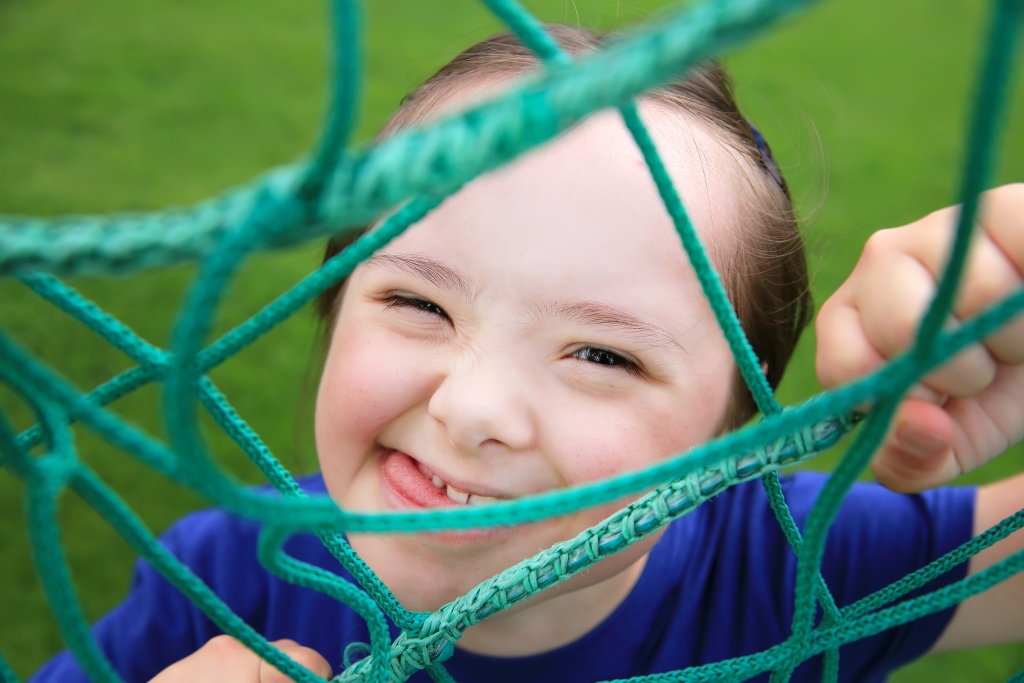
Lessons learned
Many lessons have been learned over the course of S.M.I.L.E.’s 35-year history which shaped the development of the program, and supported its success. Two key and emerging lessons are community engagement and transformative learning. Below, these lessons are discussed in order to aid practitioners who may wish to simulate similar programs within their own communities.
Community engagement. Program sustainability requires continued support from the community. Program organizers need to be committed to developing relationships within the community and, in the case of post-secondary programming, the university/college community and its decision-makers (Witchger Hansen, 2015). S.M.I.L.E. staff have specific responsibilities related to community outreach, such as weekly meetings with community organizations, businesses and university officials. Through these interactions, key stakeholders begin to understand the need and value of the program, and develop a sense of ownership. Community engagement can be fostered by individuals at all levels of a program’s organizational structure, and thus achieved regardless of program size.
A fundamental aspect of program acceptance and sustainability in the community is immediate identification and partnership with opinion leaders in key sectors (i.e., health, public and private sectors) (Greenhalgh, Robert, Macfarlane, Bate, & Kyriakidou, 2004). Opinion leaders are individuals with authority and status who can provide credibility to a program and positively influence community support (Greenhalgh et al., 2004). When S.M.I.L.E. started, a key opinion leader was the president of Acadia University. Through the president’s added credibility and support, accessing funding and necessary resources (e.g., university facilities, fundraising resources) was a more manageable process. External to the university, the immediate support of one key school led to partnerships with additional schools, and S.M.I.L.E.’s development into a formal and essential program within the local school board. Since then, S.M.I.L.E. has gained support through community organizations such as Rotary Clubs, early childhood centres, the Autism Society, school administrators and resource teachers.
Transformative learning. Transformative learning is “learning that transforms problematic frames of reference — sets of fixed assumptions and expectations (habits of mind, meaning perspectives, mindsets) — to make them more inclusive, discriminating, open, reflective, and emotionally able to change” (Mezirow, 2003, p. 58). S.M.I.L.E could not be successful without the dedication of volunteers and their desire to return, year after year. To better understand the experiences of student volunteers, volunteer program evaluations were conducted in 2015 by Acadia University students supervised by the program director. Willing volunteers who had participated in the program for more than three semesters were asked to participate in interviews or provide written reflections (23 present program volunteers and 17 past program volunteers). Interviews and reflections were transcribed verbatim and analyzed to identify in-depth detail of their learning experiences (Spencer, Ritchie, & O’Conner, 2003). Findings indicated that student volunteers often described the program as the highlight of their university careers, indicating that it changed the trajectory of their learning (Sweatman & Seaman, 2016; Sweatman, Seaman, & Warner, 2014). Through a program review process, volunteers conveyed a deep connection to S.M.I.L.E., captured by this volunteer’s reflection:
S.M.I.L.E. is three hours of safe, fun space, where I was appreciated, influential and happy. It inspired me to pursue a career in helping children, and helped me to find direction in my own life. In twenty, fifty, or a hundred years from now, if someone asks me what the most important thing I did while at University was, I will never hesitate to say S.M.I.L.E.
This strong attachment to S.M.I.L.E. does not happen by chance. Rather, indelible program connections and meaningful volunteer experiences result from a focus on fostering transformative learning opportunities – an aspect of S.M.I.L.E which can also be implemented by other programs regardless of the number of volunteers.
For S.M.I.L.E. volunteers, transformative learning involves being open to an experiential learning process that allows them to be engaged, critically reflect and dialogue, and then take action based on their new learning (Glisczinski, 2007). Within S.M.I.L.E., this engagement occurs through one-on-one relationships with participants, which are fundamental to the program and to a volunteer’s development - as noted by one volunteer: “Some days were really challenging, I did things and saw things that I never imagined, the one-on-one is really key to this program.” Volunteers also acknowledge the importance of the frequent and intentional reflection and debriefing opportunities to their engagement in S.M.I.L.E., and ultimate development (“After each program day we would do a reflection and talk about what we learned, what we could do better, how we felt. This was incredibly important.”)
Conclusion
S.M.I.L.E. is a unique program due to its physical literacy approach to program delivery for individuals with disabilities, and its long-term survival and community support. The current paper was aimed at providing an understanding of S.M.I.L.E.’s program delivery and best practices, with the goal of aiding program organizers, coaches and researchers to further develop and refine current and future programming to promote optimal participation among all individuals across the lifespan.
Appendix
References
Bondy, A., & Frost, L. (2001). The Picture Exchange Communication System. Behavior Modification, 25(5), 725-744.
Canadian Assessment of Physical Literacy (CAPL). (2013). Manual for test administration. Ottawa, ON: Health Active Living and Obesity Research Group.
Campbell, F. K. (2008). Refusing able(ness): A preliminary conversation about ableism. M/C Journal, 11(3), S1. Available at: http://journal.mediaculture.org.au/index.php/mcjournal/article/view/46. Date accessed: September 26th, 2017.
Davis, W. E. & Burton, A. W. (1991). Ecological task analysis: Translating movement behaviour theory into practice. Adapted Physical Activity Quarterly, 8(2), 154-177.
Emes, C., Longmuir, P., & Downs, P. (2002). An abilities-based approach to service deliver and professional preparation in adapted physical activity. Adapted Physical Activity Quarterly, 19, 403-419.
Glisczinski, D. J. (2007). Transformative higher education: A meaningful degree of understanding. Journal of Transformative Education, 5(4), 317-328.
Greenhalgh, T., Robert, G., Macfarlane, F., Bate, P., & Kuriakidou, O. (2004). Diffusion of innovations in service organizations: Systematic review and recommendations. Milbank Quarterly, 82(4), 581-629. doi: 10.1111/j.0887-378X.2004.00325.x
Hodge, S. R., Tannehill, D., & Kluge, M. A. (2003). Exploring the meaning of practicum experiences for PETE students. Adapted Physical Activity Quarterly, 20, 381-399.
Lepore, M., Columna, L., & Friedlander Litzner, L. (2015). Assessments and Activities for \Teaching Swimming. Champaign, IL: Human Kinetics.
Longmuir, P. E., & Tremblay, M. S. (2016). Top 10 research questions related to physical literacy. Research Quarterly for Exercise and Sport, 87(1), 28-35. doi:10.1080/02701367.2016.1124671
Mezirow, J. (2003). Transformative learning as discourse. Journal of Transformative Education, 1(1), 58-63.
Spencer, L., Ritchie, J., & O’Connor, W. (2003). Analysis: Practices, principles and processes. In J. Ritchie & J. Lewis (Eds.), Qualitative research practice: A guide for social science students and researchers (pp. 199-218). Thousand Oaks, CA: SAGE Publications Ltd.
Sweatman, M. & Seaman, R. (2016). Perspectives of Acadia student volunteers regarding the S.M.I.L.E. experience. North American Federation of Adapted Physical Activity Conference.
Sweatman, M., Seaman, R., & Warner, A. (2014). Serious leisure: Volunteerism and personal growth. Canadian Congress on Leisure Research Conference.
Whitehead, M. (Ed.) (2010). Physical literacy: Throughout the lifecourse. Oxfordshire, England: Routledge.

